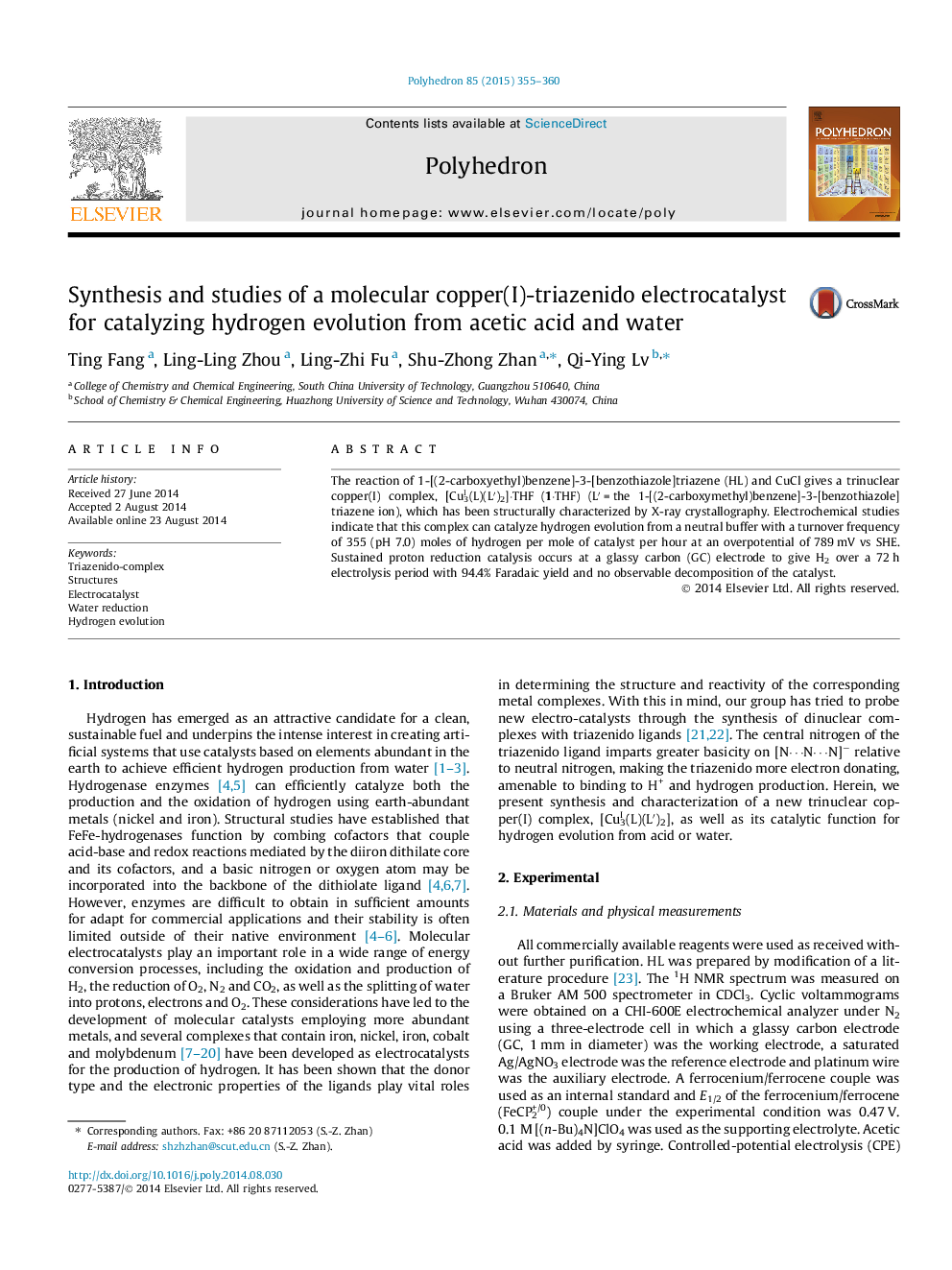| Article ID | Journal | Published Year | Pages | File Type |
|---|---|---|---|---|
| 7765893 | Polyhedron | 2015 | 6 Pages |
Abstract
The reaction of 1-[(2-carboxyethyl)benzene]-3-[benzothiazole]triazene (HL) and CuCl gives a trinuclear copper(I) complex, [CuI3(L)(Lâ²)2]·THF (1·THF) (Lâ²Â = the 1-[(2-carboxymethyl)benzene]-3-[benzothiazole]triazene ion), which has been structurally characterized by X-ray crystallography. Electrochemical studies indicate that this complex can catalyze hydrogen evolution from a neutral buffer with a turnover frequency of 355 (pH 7) moles of hydrogen per mole of catalyst per hour at an overpotential of 789 mV vs SHE. Sustained proton reduction catalysis occurs at a glassy carbon (GC) electrode to give H2 over a 72 h electrolysis period with 94.4% Faradaic yield and no observable decomposition of the catalyst.
Related Topics
Physical Sciences and Engineering
Chemistry
Inorganic Chemistry
Authors
Ting Fang, Ling-Ling Zhou, Ling-Zhi Fu, Shu-Zhong Zhan, Qi-Ying Lv,
